INDIA
Mumbai

Mumbai
Mumbai
Mumbai, formerly Bombay, is the capital of the Indian state of Maharashtra. It is the most populous city in India, with a total metropolitan population of approximately 20.5 million. It is one of the most populous urban areas in the world. The city has a deep natural harbor and is located on the west coast of India.
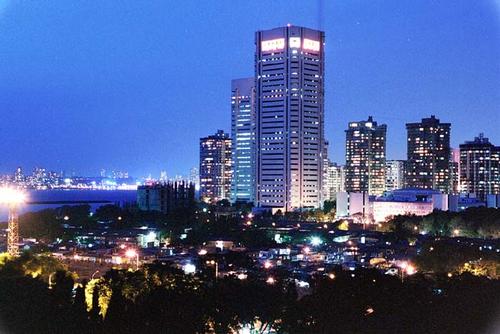 Mumbai at NightPhoto: Mark0687 in the public domain
Mumbai at NightPhoto: Mark0687 in the public domain
During the 19th century, the city developed into a strong economic and educational center. The new state of Maharashtra was founded in 1960 with Bombay as its capital. The city was renamed Mumbai in 1996. Today it is the richest city in India. Mumbai is the commercial and entertainment capital of India. Nowadays, Mumbai has over 20,000,000 inhabitants.
| advertisement |
| Hotels Mumbai |
Location
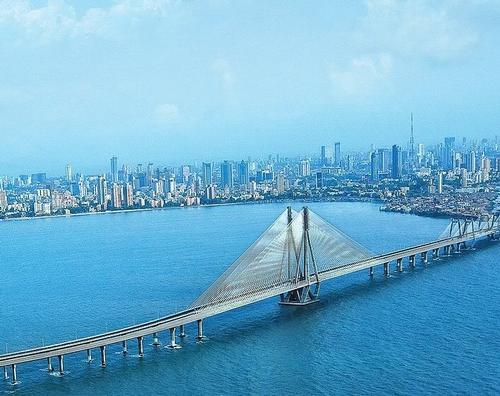 Mumbai SkylinePhoto: Yoyosrk CC 3.0 Unported no changes
Mumbai SkylinePhoto: Yoyosrk CC 3.0 Unported no changes
The coordinates of Mumbai are: 18 ° 58'30'N latitude and 72 ° 49'33'E longitude. Mumbai consists of two different areas: Mumbai City and metropolitan Mumbai. The total area of Mumbai consists of 603.4 km². Mumbai is located at the mouth of the Ulhas River on the west coast of India on Salsette Island on the Arabian Sea. Many parts of the city are at a slight height above sea level, at an average height of 14 meters.
Weather
Mumbai has a tropical climate, with wet and dry weather alternating with a total of seven months of drought and peak rainfall in July. The cooler season from December to February is followed by the summer season from March to June. The period from June to about the end of September is the rainy season, the post-monsoon season covers the months of October and November.
The maximum annual rainfall ever recorded was 3,452 mm in 1954. The most rain recorded in one day was 944 mm on July 26, 2005. The average total annual rainfall is 2,146.6 mm for the city and 2,457 mm for the suburbs. The average annual temperature is 27.2 °. The average maximum temperature is 31.2 ° C, the average minimum temperature is 23.7 ° C.
History
Mumbai is built on an archipelago of seven islands. The islands have been inhabited for over 2,000 years. Between the second century BC and the ninth century AD, the islands came under the control of successive indigenous dynasties. The islands were included in the independent Sultanate of Gujarat, which was established in 1407. Numerous mosques were built during the sultanate era.
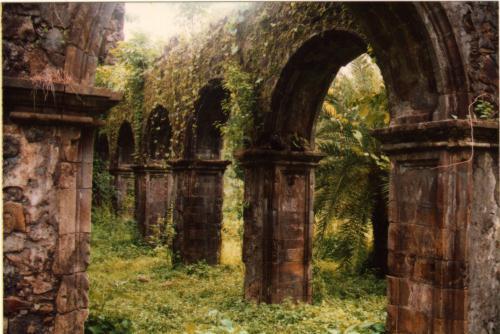 Ruins of a Portuegese Fort in MumbaiPhoto: Nichalp CC 3.0 Unported no changes made
Ruins of a Portuegese Fort in MumbaiPhoto: Nichalp CC 3.0 Unported no changes made
During the mid-16th century, the Mughal Empire became the dominant power in the Indian subcontinent. The areas were surrendered to the Portuguese in October 1535. The Portuguese introduced their Roman Catholic religious orders into Bombay. Subsequently, the islands were ceded to the British East India Company in 1668. The population rose rapidly to 60,000 in 1675.
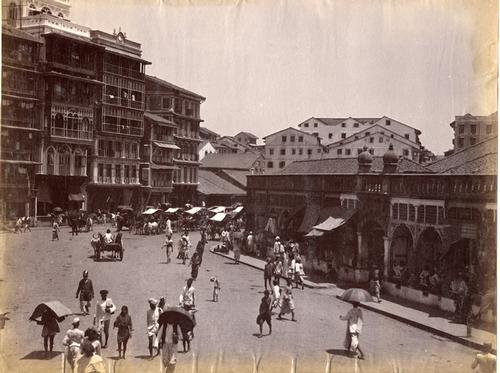 Mumbai in 1890Photo: John Mitchell Holms in the public domain
Mumbai in 1890Photo: John Mitchell Holms in the public domain
By the mid-18th century, Bombay became an important trading center, with a huge influx of immigrants from all parts of India. In April 1853, India's first railroad was established, connecting Bombay to the neighboring city of Thane. During the American Civil War (1861-1865), Bombay became the primary cotton trading market. The opening of the Suez Canal in 1869 made Bombay one of the largest seaports on the Arabian Sea. India was declared independent in 1947.
On April 1950, Bombay territory expanded and metropolitan Bombay was created. In the decades the city grew enormously fast. The port of Mumbai is called the Jawaharlal Nehru port and is specialized in container transport. The port has developed into one of the most important ports in India. Today, Mumbai is the commercial capital of India and has developed into a global financial center. Mumbai is home to the world's largest film industry.
Sights
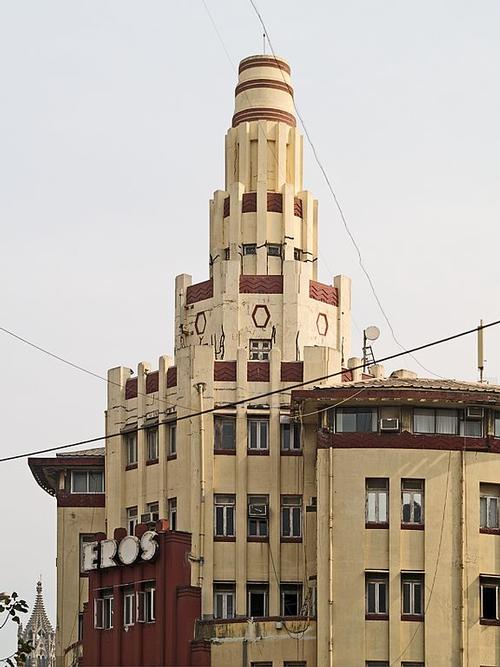 Art deco cinema in MumbaiPhoto: Colin Rose CC 2.0 Generic no changes made
Art deco cinema in MumbaiPhoto: Colin Rose CC 2.0 Generic no changes made
The city's architecture is a mix of Gothic Revival style, Indo-Saracen art, Art Deco, and varied contemporary styles. Most of the buildings date from the British period, such as Victoria Terminus and Bombay University. These buildings were built in the Gothic Revival style. Bombay's architecture includes many European influences. Art Deco monuments can be found along Marine Drive. Mumbai has the second largest number of Art Deco buildings in the world after Miami. In the newer suburbs, modern buildings dominate the landscape. Mumbai has by far the largest number of skyscrapers in India. The Chhatrapati Shivaji Terminus and the Elephanta Caves are listed as World Heritage.
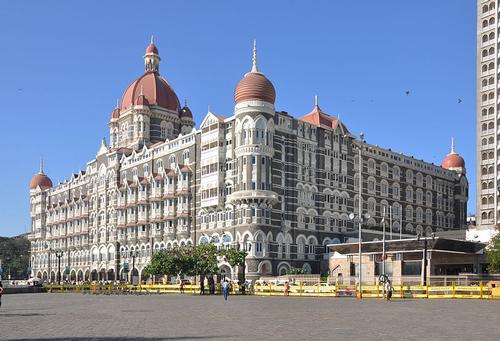 Taj Mahal Palace in MumbaiPhoto: Joe Ravi CC 3.0 Unported no changes made
Taj Mahal Palace in MumbaiPhoto: Joe Ravi CC 3.0 Unported no changes made
The majestic Taj Mahal Palace is a particularly important local landmark and is located on the Apollo Bunder next to the harbor. It was built at the beginning of the 20th century. The palace overlooks the equally impressive Gateway of India and is one of the most luxurious hotels, with over 500 rooms. Look out for the grand central staircase, which is worth a visit if you visit any of the palace's restaurants.
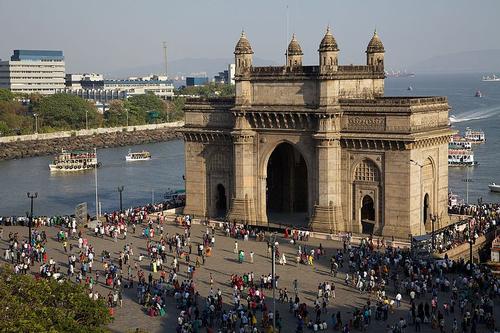 Gateway to India in MumbaiPhoto: David Brossard CC 2.0 Generic no changes made
Gateway to India in MumbaiPhoto: David Brossard CC 2.0 Generic no changes made
The iconic Gateway of India is located on the southern side of the city, close to the Taj Mahal Palace. The gate was opened in 1924, but was decommissioned some 20 years later. The gate has become a favorite meeting place, attracting large crowds, who come here to enjoy the atmosphere, the street entertainment, the photographers, the balloon vendors, the pleasure boats and the carriages.
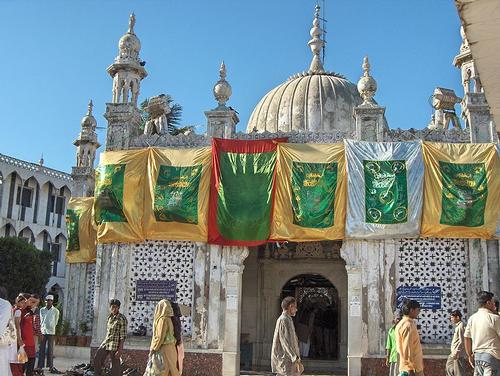 Haji Ali Dargah mosquein MumbaiPhoto: Nichalp CC 3.0 Unported no changes made
Haji Ali Dargah mosquein MumbaiPhoto: Nichalp CC 3.0 Unported no changes made
The Haji Ali Dargah Mosque is built in the ocean, and is connected to the mainland by a narrow road, over 400 meters in length. The road can only be walked on during low tide. The mosque has a beautiful minaret and a grand marble courtyard.
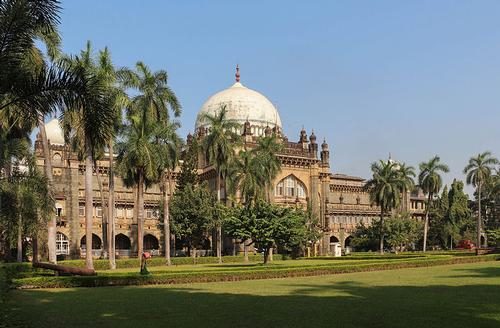 Chhatrapati Shivaji Maharaj Vastu Sangrahalaya in MumbaiPhoto: Bernard Gagnon CC 4.0 International no changes made
Chhatrapati Shivaji Maharaj Vastu Sangrahalaya in MumbaiPhoto: Bernard Gagnon CC 4.0 International no changes made
India's famous Chhatrapati Shivaji Maharaj Vastu Sangrahalaya is often referred to as the Prince of Wales Museum of West India. The museum was founded more than 100 years ago and opened its doors to the public in 1922. The museum contains many extensive themes, including the Maritime Heritage gallery and the Natural History section. The building itself is particularly impressive, with intricate architecture and a large central dome above the main entrance. Outside you will see beautiful gardens, full of flowers and large palm trees.
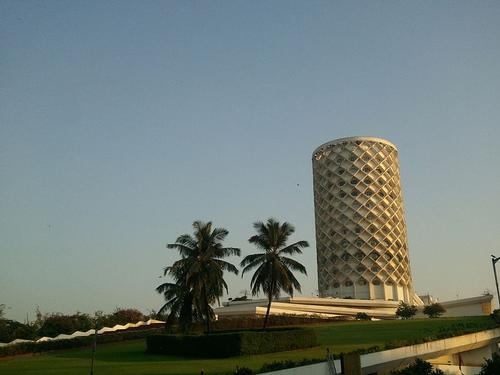 Nehru center and Planetarium in MumbaiPhoto: Deepak Bansi CC 3.0 Unported no changes made
Nehru center and Planetarium in MumbaiPhoto: Deepak Bansi CC 3.0 Unported no changes made
All scientific and astronomical matters are explained in the Nehru Center and Planetarium. Various exhibitions and events take place here all year round, often with a solid scientific theme. The planetarium itself is particularly impressive, consisting of a large domed building, with daily shows explaining the mysteries of the solar system.
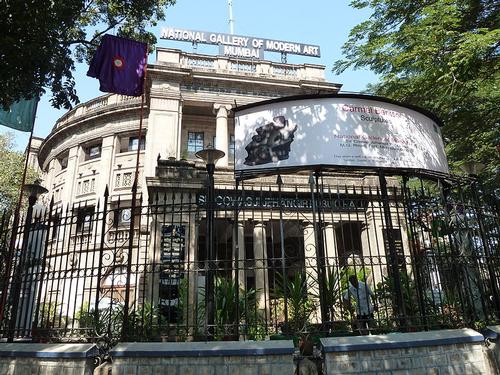 National Gallery of Modern art in MumbaiPhoto: Balajijagadesh CC 3.0 Unported no changes made
National Gallery of Modern art in MumbaiPhoto: Balajijagadesh CC 3.0 Unported no changes made
The National Gallery of Modern Art (NGMA) is located inside the Cowasji Sir Jehangir Public Hall. It is an acclaimed place where modern exhibitions, which are among the best of its kind in all of India, are held. There is a permanent collection of pieces from all over the country, which are displayed on the top floor in the dome gallery.
Tips Mumbai
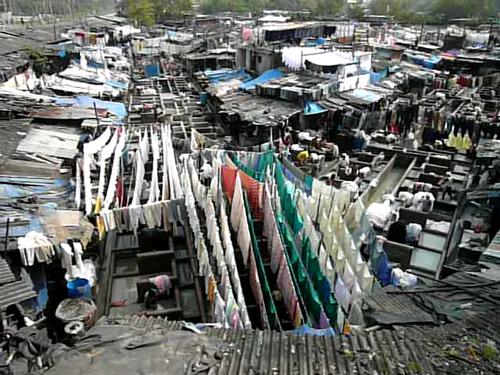 Dhobi Ghat in MumbaiPhoto: Cory Doctorow (CC BY-SA 2.0) no changes made
Dhobi Ghat in MumbaiPhoto: Cory Doctorow (CC BY-SA 2.0) no changes made
One of Mumbai's most special attractions is the Dhobi Ghat in Mahalaxmi, where about 5,000 men and women literally smash the dirt from large numbers of garments, The garments are brought in from all over the city. In large troughs, the clothes are dried in the sun. Many tourists come here to take beautiful pictures from the nearby bridge near the Mahalaxmi station.
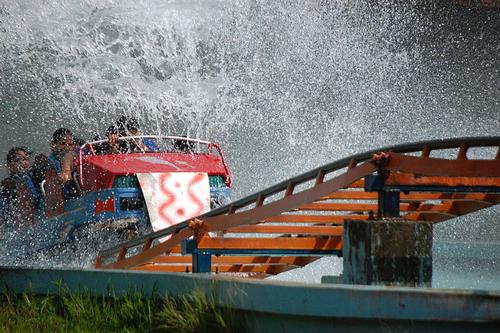 Water fun at Esselworld in MumbaiPhoto: Sajeevkumarc CC 3.0 Unported no changes made
Water fun at Esselworld in MumbaiPhoto: Sajeevkumarc CC 3.0 Unported no changes made
Essel World is an amusement park and entertainment center and is close to Gorai Beach, here you will also find Asia's largest water theme park called Water Kingdom. The roller coasters are especially popular, but you sometimes get in line.
Useful links Mumbai
BBC Country ProfilesWorld Fact Book Explore all Countries
How to call
Last updated June 2025
Copyright: Team - The World of Info